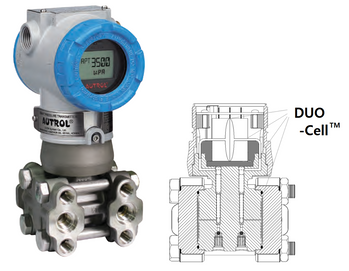3D Printing in Shipbuilding: Revolutionizing Maritime Manufacturing
3D printing, also known as additive manufacturing, is rapidly gaining traction in the shipbuilding industry. This innovative technology allows for the creation of complex components and structures by adding material layer by layer, rather than subtracting it from a larger block. As the maritime sector seeks to enhance efficiency, reduce costs, and improve sustainability, 3D printing is emerging as a powerful tool that has the potential to revolutionize shipbuilding and repair processes.
The Basics of 3D Printing
3D printing involves the use of digital designs to create physical objects by laying down successive layers of material, which can include plastics, metals, ceramics, and even composite materials. The process begins with a digital model, which is sliced into thin layers by specialized software. The 3D printer then builds the object layer by layer, following the design precisely.
In shipbuilding, 3D printing can be used to produce a wide range of components, from small, intricate parts to large structural elements. The ability to create parts on-demand, without the need for expensive molds or tooling, makes 3D printing particularly appealing in an industry where custom components and repairs are often required.
Applications of 3D Printing in Shipbuilding
Component Manufacturing
- One of the most significant applications of 3D printing in shipbuilding is the production of components and parts. These can range from small, complex parts, such as valves and pumps, to larger items like propellers and hull sections. By using 3D printing, shipbuilders can create custom parts with intricate geometries that would be difficult or impossible to produce using traditional manufacturing methods.
Prototyping and Design
- 3D printing is also a valuable tool for prototyping and design verification. Shipbuilders can quickly produce scale models of new designs, allowing engineers to test and refine their ideas before committing to full-scale production. This iterative process helps reduce development times and costs, while also minimizing the risk of design errors.
Repair and Maintenance
- In the maintenance and repair of ships, 3D printing offers the ability to produce replacement parts on-demand, even in remote locations. This capability can significantly reduce downtime, as there is no need to wait for parts to be shipped from a manufacturer. Instead, digital files can be sent to a 3D printer on board the ship or at a nearby facility, where the part can be produced and installed quickly.
Customization
- Ships often require specialized components tailored to specific operational needs. 3D printing enables shipbuilders to produce custom parts with relative ease, allowing for greater flexibility in design and functionality. This customization can lead to improved performance and efficiency in various maritime applications.
Lightweight Structures
- 3D printing allows for the creation of lightweight structures by optimizing material usage. This is particularly important in shipbuilding, where reducing weight can lead to improved fuel efficiency and lower operating costs. By using advanced materials and innovative design techniques, 3D-printed components can offer significant weight savings without compromising strength or durability.
Benefits of 3D Printing in Shipbuilding
The adoption of 3D printing in shipbuilding brings several key benefits:
Cost Reduction
- Traditional manufacturing processes, especially for custom or small-batch production, can be expensive due to the need for specialized tooling and molds. 3D printing eliminates these requirements, leading to significant cost savings. Additionally, the ability to produce parts on-demand reduces inventory costs and waste.
Speed and Efficiency
- 3D printing enables rapid production of parts, reducing lead times and allowing for faster project completion. This is particularly beneficial in shipbuilding, where delays can be costly. The technology also streamlines the supply chain, as parts can be produced locally, reducing the need for transportation and associated delays.
Sustainability
- 3D printing is inherently more sustainable than traditional manufacturing methods, as it generates less waste and allows for the use of recycled materials. In the shipbuilding industry, where environmental regulations are becoming increasingly stringent, the ability to reduce material waste and energy consumption is a significant advantage.
Innovation and Design Freedom
- 3D printing provides shipbuilders with greater design freedom, enabling the creation of complex geometries and structures that would be challenging or impossible to achieve with conventional methods. This innovation can lead to the development of more efficient and effective ship designs, pushing the boundaries of what is possible in maritime engineering.
On-Demand Production
- The ability to produce parts on-demand is a game-changer for the maritime industry, particularly in remote locations or during extended voyages. 3D printing allows for the rapid production of replacement parts and components, reducing downtime and ensuring that ships can remain operational without waiting for parts to be shipped from distant suppliers.
Challenges and Considerations
While 3D printing offers numerous advantages, there are also challenges that must be addressed:
Material Limitations
- Although the range of materials available for 3D printing is expanding, there are still limitations in terms of material properties, particularly for high-strength metals and composites. Ongoing research and development are necessary to expand the range of materials suitable for shipbuilding applications.
Quality Control
- Ensuring the quality and consistency of 3D-printed parts is critical, particularly for components that must meet stringent safety and performance standards. The industry is working on developing standardized testing and certification processes to ensure that 3D-printed parts meet the required specifications.
Scale of Production
- While 3D printing is well-suited for producing small to medium-sized components, scaling the technology for large-scale production, such as entire ship hulls, presents significant challenges. Advances in large-format 3D printing are required to fully realize the potential of additive manufacturing in shipbuilding.
Integration with Existing Processes
- Integrating 3D printing into existing shipbuilding processes and workflows requires careful planning and coordination. This includes training personnel, updating design software, and ensuring that 3D-printed parts can be seamlessly integrated with traditionally manufactured components.
The Future of 3D Printing in Shipbuilding
The future of 3D printing in shipbuilding is bright, with ongoing advancements in materials, technology, and processes expected to drive further adoption. As the maritime industry continues to embrace digitalization and innovation, 3D printing will play a crucial role in enhancing efficiency, reducing costs, and enabling new possibilities in ship design and construction.
In the coming years, we can expect to see more widespread use of 3D printing in both commercial and military shipbuilding, as well as in the maintenance and repair of existing fleets. The technology's ability to produce complex, custom parts quickly and cost-effectively will make it an indispensable tool for shipbuilders and operators alike.
Conclusion
3D printing is poised to revolutionize the shipbuilding industry, offering significant benefits in terms of cost, efficiency, and innovation. While challenges remain, the potential for 3D printing to transform maritime manufacturing is undeniable. As the technology continues to evolve, it will open up new opportunities for shipbuilders to create more efficient, sustainable, and innovative vessels, ensuring that the maritime industry remains at the cutting edge of technological advancement.



















